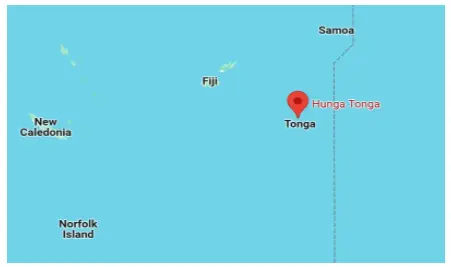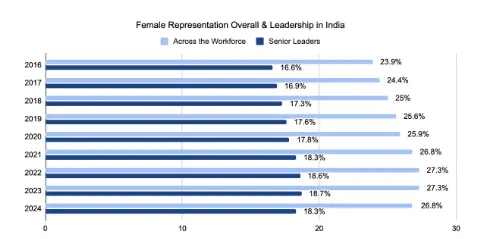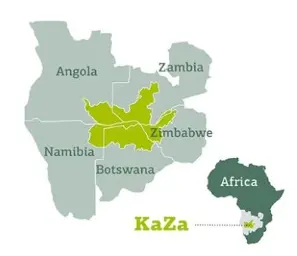Saturday, 8th June 2024
Remoulding the Global Plastics Treaty
Why in the news ?
- Recently, global leaders will gather in Canada’s capital -Ottawa – to discuss progress in drafting a first-ever global treaty to rein in soaring plastic pollution by the end of the year.

- According to the OECD Global Plastic Outlook, global production of plastic waste was 353 million tonnes in 2019 — more than double since it was in 2000, and is set to triple by 2060.
- Only 9% of this was recycled, 50% sent to landfills, 19% incinerated, and 22% disposed of in uncontrolled sites or dumps.
- According to the United Nations Environment Programme, of the 9% recycled, 85% was done by informal recycling workers.
Why is a Global Plastics Treaty Needed?
- Rapid Expansion of Plastic Production:
- Since the 1950s, global plastic production has surged from 2 million tonnes to over 450 million tonnes in 2019.
- Projections indicate a potential doubling by 2050 and tripling by 2060 if not regulated.
- Plastic Waste and Burden:
- With less than 10% recycled, nearly 6 billion tonnes of plastic pollution persist, generating around 400 million tonnes of waste annually.
- The leakage of plastic waste into ecosystems, notably rivers and oceans, results in harmful microplastics carrying toxic chemicals, impacting both wildlife and human health.
- Climate Change Impact:
- Plastic production and disposal contribute significantly to greenhouse gas emissions.
- In 2019, plastics generated 1.8 billion tonnes of emissions, equivalent to 3.4% of global emissions, with 90% originating from production.
- Continued growth in production emissions could lead to a 20% increase by 2050, exacerbating climate change effects
Global Plastic Treaty Needs Just Transition:
- Framework for Action: The Global Plastics Treaty aims to create a legally binding international framework to reduce and ultimately eliminate plastic pollution.
- Inclusion of Informal Sector: It is crucial that the treaty includes specific provisions to support the transition of informal recycling workers into formal economies, recognizing their role and integrating their knowledge and skills.
- Formalization and Integration: Advocates call for the formalisation of informal waste sectors, which would help secure the livelihoods of these workers and improve their working conditions.
- Equitable Participation: The treaty should ensure that informal recyclers are involved in the negotiation processes and that their voices are heard in the formulation of policies.
- Defining a Just Transition: There needs to be a clear and universally accepted definition of what a “just transition” for the informal waste sector entails, focusing on securing rights, providing safety nets, and enhancing their economic opportunities
Key Challenges and Stakeholder Positions:
- Past Negotiations: Divisions surfaced in three rounds of talks in Punta del Este, Paris, and Nairobi. The Nairobi draft expanded from 30 to 70 pages due to disagreements over ambitious measures like production caps.
- Current Pressure: Countries need to unify their positions before the final December negotiations in Busan, South Korea.
- Like-Minded Countries: Nations such as Saudi Arabia, Iran, and China oppose production limits, focusing on no restrictions in the treaty.
- High-Ambition Coalition: Includes 60 nations like EU countries and Japan, aiming to end plastic pollution by 2040. They support binding reductions in plastic production and consumption, phase-outs of problematic plastics, and bans on harmful additives.
- Petrochemical Industry Stance: Advocates against production caps, claiming they would increase consumer prices. They prefer focusing on plastic reuse, recycling, and energy recovery, and support voluntary disclosure of production chemicals.
- Corporate Brands: Over 200 companies, including Unilever and PepsiCo, support the treaty with measures for production caps, use restrictions, phase-outs, design innovations, extended producer responsibility, and improved waste management.
Role of International and National Entities:
- UNEP Plastics Initiative:
- Aims to combat global plastic pollution by reducing virgin plastic flow and promoting circular economy practices.
- Targets include policy improvements in 45 countries, engagement of 500 private sector actors, and involvement of 50 financial institutions by 2027.
- Global Tourism Plastics Initiative:
- Led by the UN Environment and UNWTO, it brings tourism stakeholders together to tackle plastic pollution.
- It encourages commitments from the private sector, destinations, and associations to reduce plastic waste by 2025.
- Circular Plastic Economy:
- The EU's Circular Economy Action Plan and European Strategy for Plastics promote circularity, aiming to limit plastic waste through reuse and alternatives to single-use plastics.
- Support from NGOs:
- Organisations like the International Alliance of Waste Pickers advocate for the rights of informal workers, pushing for their inclusion in international policy discussions.
- National Bans on Plastic:
- Bangladesh: First country to ban thin plastic bags in 2002.
- China: Implemented phased ban on plastic bags starting from 2020.
- United States: 12 states have banned single-use plastic bags.
- European Union: Implemented Directive on Single-Use Plastics in 2021, banning certain single-use plastics with available alternatives like cutlery, straws, and polystyrene containers.
india's Key Initiatives on Plastic Waste Management:
- Plastic Waste Management (Amendment) Rules, 2024: Updated regulations to enhance the framework for managing plastic waste.
- Plastics Manufacture and Usage (Amendment) Rules, 2003: Amendments aimed at regulating the production and use of plastics.
- UNDP India’s Plastic Waste Management Program (2018-2024): A program in partnership with UNDP to improve plastic waste management practices across India.
- Prakrit Initiative: A focused effort to promote sustainable environmental practices related to plastic use.
- EPR Portal by Central Pollution Control Board (CPCB): An online platform to facilitate and monitor Extended Producer Responsibility (EPR) compliance among manufacturers.
- India Plastics Pact: A collaborative initiative aimed at transforming the plastic packaging sector towards a circular economy.
- Project REPLAN: A project that focuses on reducing plastic waste through innovative recycling methods.
- Swachh Bharat Mission: A national campaign that includes efforts to reduce plastic pollution as part of broader cleanliness and sanitation objectives.
India’s Voice is Important:
- India’s stance on promoting repair, reuse, refill, and recycling while retaining the use of plastics underscores the importance of considering country-specific contexts and capabilities.
- The indispensable role of India’s informal waste pickers highlights their centrality in discussions surrounding plastic waste management.
- Rethinking Extended Producer Responsibility (EPR) norms is essential for integrating informal workers into the evolving legal framework.
- As a prominent representative from the Global South, India's perspectives and strategies play a crucial role in shaping the Global Plastics Treaty.
Conclusion:
Hence, the Global Plastics Treaty has the potential to embrace social justice and equity principles by considering the perspectives of informal waste workers and safeguarding their livelihoods. This approach ensures inclusivity and sustainability, aiming for a future where no one is left behind in the fight against plastic pollution.
|
UPSC Civil Services Examination, Previous Year Question (PYQ) Prelims Q:1 Why is there a great concern about the ‘microbeads’ that are released into the environment? (2019)
Ans: (a) Q:2 In India, ‘extend producer responsibility’ was introduced as an important feature in which of the following? (2019)
Ans: (c) Mains: Q:1 What are the impediments in disposing of the huge quantities of discarded solid waste which are continuously being generated? How do we safely remove the toxic wastes that have been accumulating in our habitable environment? (2018) |
Source: TH
RBI policy panel kept repo rate unchanged
Why in the news?
- The RBI's Monetary Policy Committee maintained the repo rate at 6.5% for the eighth consecutive time, citing persistent high retail inflation driven by stable food prices.
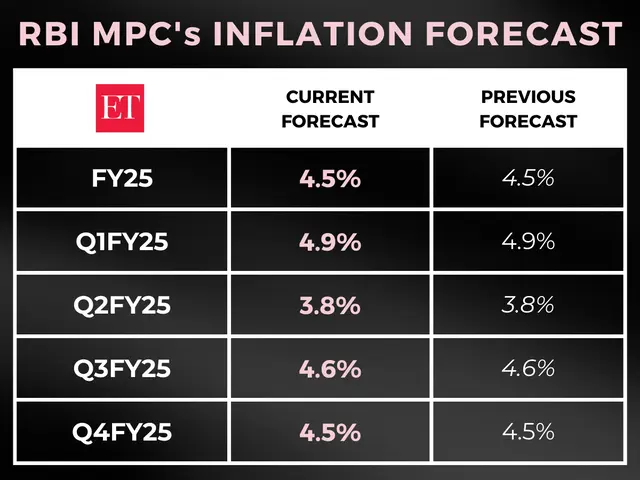
Why did the RBI keep the Rates Unchanged?
- Inflation Concerns: The Monetary Policy Committee (MPC) maintained the repo rate at 6.5% due to ongoing high inflation levels, with retail inflation in April 2024 recorded at 4.83%.
- Caution on Food Inflation: The policy stance remains cautious due to potential risks of increasing food inflation caused by heatwave conditions, which could disrupt the disinflation process.
- Flexible Inflation Targeting: The RBI operates under a flexible inflation targeting framework, aiming to maintain inflation within the range of 2-6% and achieve a sustainable 4% target over time.
- Supply Side Disruptions: Persistent supply disruptions in essential food items like cereals, pulses, spices, and vegetables have contributed to sustained high food inflation, impacting overall inflation management efforts.
What happens to Lending Rates if the Repo Rate is left steady?
- Lending Rate: Also known as the bank rate, it's the rate at which commercial banks borrow money from the central bank without securities. It's higher than the repo rate and used for longer-term lending to assess a bank's long-term monetary goals and manage liquidity.
- Repo Rate: This rate is the rate at which the central bank lends money to commercial banks against government securities as collateral. It's used for short-term lending and typically lower than the lending rate.
- Relief for Borrowers: With the repo rate held steady at 6.5%, external benchmark lending rates (EBLR) tied to the repo rate won't rise, ensuring that equated monthly instalments (EMIs) for home and personal loans remain unchanged.
- Potential MCLR Increase: However, lenders might increase interest rates on loans linked to the marginal cost of fund-based lending rate (MCLR) since the full transmission of the 250 basis points repo rate hike from May 2022 to February 2023 hasn't been released yet.
Why Has MPC Hiked GDP Growth?
- Improving Demand: The MPC revised the GDP growth forecast for FY25 to 7.2% from 7% due to strengthening rural and urban demand conditions, supported by favourable monsoon forecasts.
- Robust Economic Activity: Healthy growth in the eight core industries, strong Purchasing Managers Index (PMI) in manufacturing and services, and overall resilient domestic economic activity underpin the upgraded growth projection.
- Sectoral Strength: Both the manufacturing and services sectors demonstrated robust performance, with the PMI for services reaching 60.2 in May 2024, signalling strong expansion.
Conclusion
Hence, the RBI's cautious decision to maintain steady rates while elevating GDP growth projections reflects a delicate balance between fostering economic expansion and controlling inflation, particularly in response to enduring food inflation concerns.
|
UPSC Civil Services Examination, Previous Year Question (PYQ) Prelims Q:1 With reference to Indian economy, consider the following: (2015)
Which of the above is/are components/ components of Monetary Policy?
Ans: (c) Q:2 Which of the following statements is/are correct regarding the Monetary Policy Committee (MPC)? (2017)
Select the correct answer using the code given below:
Ans: (a) Q:3 If the RBI decides to adopt an expansionist monetary policy, which of the following would it not do? (2020)
Select the correct answer using the code given below:
Ans: (b) Mains Q:1 Do you agree with the view that steady GDP growth and low inflation have left the Indian economy in good shape? Give reasons in support of your arguments. (2019) |
Source: IE
Delhi’s Water Crisis
Why in the News?
- Recently, the Supreme Court mandated the Himachal Pradesh administration to release its surplus water of 137 cusecs and instructed Haryana to take necessary steps to alleviate the drinking water shortage in Delhi.
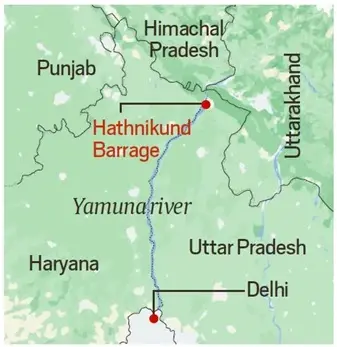
Water in Delhi Coming From:
- Delhi primarily relies on the Yamuna, Ravi-Beas, and Ganga rivers for its water supply.
- From the Ganga, via the Upper Ganga Canal in Uttar Pradesh, Delhi receives approximately 470 cusecs or roughly 254 million gallons per day (MGD) of water.
- Water from the Yamuna and Ravi-Beas rivers is supplied to Delhi through two channels, namely the carrier lined channel (CLC) Munak and the Delhi sub-branch (DSB) canals, amounting to 1094 cusecs.
- The Delhi Jal Board (DJB) supplements its river-water supply with groundwater drawn from the city's tube wells and wells.
Note:
- As per the Composite Water Management Index released by NITI Aayog in 2019, India is home to five of the world's 20 largest cities facing water stress, with Delhi ranking second on the list.
Reasons for Water Scarcity in Delhi:
- Over-extraction of groundwater:
- Delhi's daily water demand stands at 1,290 MGD, while the Delhi Jal Board (DJB) currently produces 1,000 MGD, resulting in a gap filled by groundwater extraction.
- Pollution of water sources:
- Elevated ammonia levels exceeding 2.5 parts per million in the Yamuna contribute to inadequate water quality in parts of Delhi.
- Discharge of toxic waste from small and medium industries into the Yamuna via drains and rivulets further contaminates Delhi's water supply.
- Impact of climate change:
- The draft of the Delhi State Action Plan on Climate Change projects economic losses of Rs 2.75 trillion by 2050 due to climate change effects.
- Rising temperatures and erratic precipitation patterns pose significant challenges to Delhi's water availability.
- Inefficient water management:
- Allegations of annual water shortages during summers point to the state government's inefficient water management.
- Poor coordination and transparency among Delhi, Haryana, and Uttar Pradesh governments, particularly in managing the Wazirabad, ITO, and Okhla barrages, exacerbate water management issues.
- Inter-state water disputes:
- Disputes between Haryana and Delhi revolve around Yamuna river water allocation, with Haryana accusing Delhi of exceeding agreed-upon water allocations.
- Water treatment plant (WTP) capacity:
- The Wazirabad WTP in North Delhi operates below capacity due to insufficient water in the Yamuna caused by deficit rainfall, impacting Delhi's water supply.
Challenges Posed by Water Scarcity:
- Economic Impact:
- Water scarcity will result in decline of food production. This will hamper India’s food security and have serious impacts on the livelihood of farmers and farm labourers.
- Decline in industrial production as Industrial sectors such as textiles, thermal power plants,etc. may suffer due to water shortage
- Ecological Impact
- Water scarcity may lead to extinction of flora and fauna.
- Heavy metal contamination (Arsenic, cadmium, nickel etc.) and oil spills in rivers and oceans respectively may threaten marine biodiversity.
- Social Impact
- The increased out-of-pocket expenditure on medical expenses adversely impacts the poorest and the most vulnerable sections.
- Increased hardships for women like school dropouts,’water wives‘ to fetch water in drought prone regions.
- Public Health issues:
- Due to a lack of clean water, underprivileged populations living in illegal colonies are frequently forced to rely on dangerous water sources, which leads to waterborne diseases.
- Insufficient water supply also hampers the maintenance and cleanliness of public toilets. When water is scarce, sewage systems can fail, which increases the risk of diseases such as cholera.
Solutions to Address Water Scarcity:
- Water conservation and management
- The Delhi government ordered a crackdown on water misuse, and the National Green Tribunal and the State Pollution Control Boards need to take the initiative to stop waste discharge from entering Yamuna.
- Technological interventions:
- DJB, with Hitachi India, installed field sensors and smart metres in Pitampura's water distribution network.
- These advancements enable remote real-time monitoring, enhancing water distribution efficiency.
- Infrastructure development:
- DJB should adopt a more commercially-oriented approach, and customers (households, businesses, and industries) must be willing to pay the actual cost of water supply.
- DJB recently raised infra charges for new water connections.
- Policy and governance reforms:
- State and city governments need to consider water resource availability when planning city development and issuing permits for new establishments.
- Unsustainable development activities in terms of water management must be restricted.
- Community participation in rainwater harvesting:
- Delhi has immense potential for rainwater harvesting, estimated at 907 billion litres annually.
- Effective implementation of rooftop rainwater harvesting requires organising awareness campaigns at the community level.
|
Steps have been taken by the Government:
|
|
UPSC Civil Services Examination, Previous Year Question (PYQ) Prelims Q.1. Which one of the following ancient towns is well known for its elaborate system of water harvesting and management by building a series of dams and channelizing water into connected reservoirs? (2021)
Ans: (a) Q.2. With reference to ‘Water Credit’, consider the following statements: (2021)
Which of the statements given above are correct?
Ans: (c) Mains Q.1 What are the salient features of the Jal Shakti Abhiyan launched by the Government of India for water conservation and water security? (2020) Q.2 Suggest measures to improve water storage and irrigation system to make its judicious use under the depleting scenario. (2020) |
Representation of Women in the Lok Sabha
Why in the News ?
- Recently, in the Lok Sabha election 2024, A total of 74 women have won the Lok Sabha elections, a slight dip from 78 elected in 2019 and West Bengal leads with 11 female MPs.

About the Women in the 18th Lok Sabha:
- A total of 797 women candidates had contested the elections with the BJP fielding the maximum at 69 followed by the Congress at 41.
- These 74 women constitute just 13.63% of the elected strength of the Lower House, which is much less than the 33% that will be reserved for women after the next delimitation exercise.

|
Global Comparison:
|
Reasons for low Participation of Women:
- Low Literacy: In general, female candidates are less educated and experienced than male candidates. In India, women have a literacy rate of 65% compared to men’s 82%.
- Lack of Political Will: The repeated defeat of the bill reserving one-third of the seats for women shows a lack of political will among lawmakers. Although all parties' platforms include the measure, it has never been enacted.
- Masking of Identity: In the 2019 elections, 206 women individually participated, but only one won. This highlights the significant role political parties and a person’s background play in determining political success, often concealing the individual's true identity behind the party and family.
- Patriarchy: Despite having the majority, women often do not experience their authority because male spouses or other family members influence their decisions. The formation of "Sarpanchpati" in Panchayati Raj institutions is a clear example of this.
- Gender Disparities: Women still face obstacles in the form of gender biases and disparities in education, resource ownership, and attitudes.
- Lack of Confidence and Finance: Lack of confidence and financial resources are major obstacles that prevent women from pursuing careers in politics.
Significance of Women Participation:
- Representation: Women lawmakers ensure that the interests and issues of women are represented in policy-making.
- Diversity: They bring diverse perspectives and experiences to the table, leading to more comprehensive and inclusive policies.
- Empowerment: Their presence in law-making bodies can empower other women and girls by providing them with role models.
- Equality:It is a matter of gender equality. Women make up half of the population and should therefore have an equal say in the laws that govern society.
Efforts to reduce the gap:
- National Commission for Women
- The National Commission for Women in India have organised consultations on women's rights under property law and assessed the impact of the 73rd and 74th Amendments (1992), which focus on women's roles in Panchayati Raj Institutions (PRIs) and Urban Local Bodies (ULBs).
- National Human Rights Commission (NHRC):
- The NHRC has conducted an analytical study on the United Nations Convention on the Elimination of All Forms of Discrimination against Women (CEDAW) and its implementation in India.
- This study is valuable to lawmakers, policymakers, executives, civil society, academicians, and students of gender studies and human rights.
- Nari Shakti Vandan Adhiniyam (2023):
- The Women’s Reservation Bill proposes reserving one-third of seats for women in the Lok Sabha and state legislative assemblies.
- Pending presidential assent, this amendment represents a significant step toward greater female representation in national politics.
- National Policy for Women Empowerment:
- This policy aims to advance, develop, and empower women. It encourages active participation from all stakeholders to achieve its goals through widespread dissemination.
Conclusion:
Hence, the representation of women in the Lok Sabha is a mirror of the broader societal attitudes towards gender equality. The upcoming delimitation exercise, which aims to reserve 33% of seats for women, is a positive step. However, it is crucial to continue the discourse on this issue and strive towards creating an inclusive and representative political system.
|
UPSC Civil Services Examination Previous Year Questions (PYQs) Mains Q:1 What are the continued challenges for Women in India against time and space? (2019) Q:2 Discuss the desirability of greater representation to women in the higher judiciary to ensure diversity, equity and inclusiveness. (2021) |
Two bird sanctuaries of Bihar added to Ramsar list
Why in the News?
- Recently, the "Ramsar Convention" has added two wetlands in Bihar, the Nagi and Nakti bird sanctuaries, to the global list of wetlands of international importance, raising India's total number of Ramsar sites to 82.
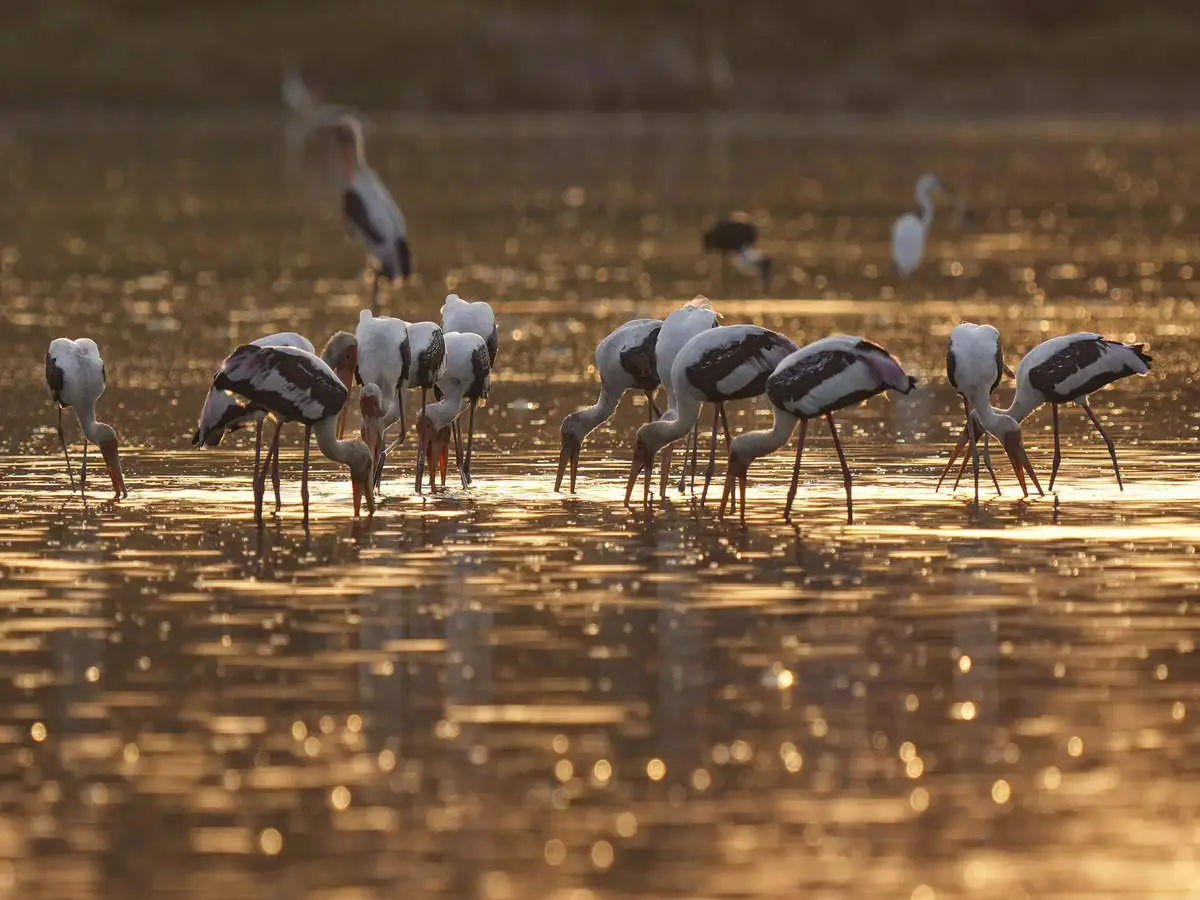
Note:
- The UK currently leads with 175 Ramsar sites, followed by Mexico with 144. In the past decade, India's count has surged from 26 to 82 sites, with 40 added in just the last three years.
Criteria for wetland site declaration:

About the Nagi-Nakti Wetland:
- Location: Nagi-Nakti Wetlands are located in Bihar's Jamui district, nestled within the Jhajha forest range, surrounded by dry deciduous forests and hills.
- Origin: These wetlands were originally constructed as man-made reservoirs primarily for irrigation purposes, facilitated by the construction of dams.
- Biodiversity: The wetlands boast a rich biodiversity, harbouring over 150 species of birds, mammals, fish, aquatic plants, reptiles, and amphibians.
|
Nakti Bird Sanctuary:
Nagi Bird Sanctuary:
|
Ecological Significance:
- Migratory Bird Sanctuary: These sanctuaries are vital wintering grounds for many migratory bird species, drawing over 20,000 birds during winter.
- Biodiversity Support: Nagi and Nakti sanctuaries sustain a diverse ecosystem, housing over 75 bird species, 33 fish species, and 12 aquatic plant species.
- Bar-headed Geese Gathering: Notably, these wetlands are renowned for hosting one of the largest congregations of bar-headed geese in the Indo-Gangetic plain, underscoring their significance as migratory bird habitats.
|
Ramsar Convention:
|
|
UPSC Civil Services Examination Previous Year Question (PYQ) Prelims Q:1 If a wetland of international importance is brought under the ‘Montreux Record’, what does it imply? (2014)
Ans: (a) Q:2 Consider the following pairs: (2022) Wetland/Lake Location
How many pairs given above are correctly matched?
Ans: (b) Q:3. “If rainforests and tropical forests are the lungs of the Earth, then surely wetlands function as its kidneys.” Which one of the following functions of wetlands best reflects the above statement? (2022)
Ans: (d) Q:4. Consider the following statements: (2019)
Which of the statements given above is/are correct?
Answer: (b) Mains Q:1 What is wetland? Explain the Ramsar concept of ‘wise use’ in the context of wetland conservation. Cite two examples of Ramsar sites from India. (2018) Q:2 Wetlands hold a significant place as an ecosystem in our environment. In the light of this statement explain the functions of wetlands and discuss the threats causing their depletion.(2020) |
Source: DTE
TRISHNA - ISRO announces Indo-French Thermal Imaging Mission
Why in the news?
- Recently, on the event of World Environment Day, ISRO provided details of Thermal Infrared Imaging Satellite for High-resolution Natural Resource Assessment (TRISHNA) mission.
- TRISHNA (Thermal Infra-Red Imaging Satellite for High-resolution Natural Resource Assessment) mission is a collaborative endeavour between ISRO and CNES (French Space Agency) to monitor surface temperature and water management at regional to global scale.
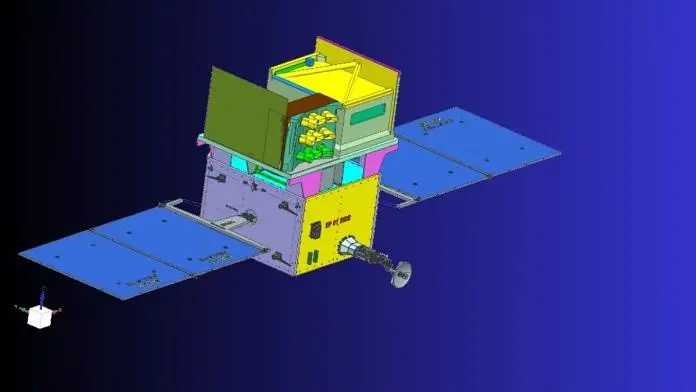
About TRISHNA Mission:
- Objective: The mission aims to meticulously monitor the energy and water budgets of the continental biosphere to quantify terrestrial water stress and usage. Additionally, it seeks to provide high-resolution observations of water quality and dynamics.
- TRISHNA will contribute to comprehensive assessments of urban heat islands, detection of thermal anomalies associated with volcanic activity, and exploration of geothermal resources.
Equipped with two primary payloads:
- Thermal Infra-Red (TIR) payload: Provided by CNES, features a four-channel long-wave infrared imaging sensor.
- Visible - Near Infra-Red - ShortWave Infra-Red (VNIR-SWIR) payload: Developed by ISRO, includes seven spectral bands designed for detailed mapping of surface reflectance
features:
- It will operate in a sun-synchronous orbit at an altitude of 761 km.
- The mission is designed for a five-year operational life and will provide a spatial resolution of 57 metres for land and coastal areas and 1 km for oceanic and polar regions.
- The satellite will use a set of infrared sensors – developed by India and France in collaboration – to monitor the temperature.
Significance:
- Water Management: Facilitates assessment of irrigation water use, enhancing crop water productivity and micro-watershed management sustainability.
- Climate Monitoring: Tracks indicators like droughts, permafrost changes, and evapotranspiration rates, aiding climate monitoring efforts.
- Water Quality: Monitors water quality, enabling pollution detection in coastal and inland water bodies.
- Groundwater Discharge: Identifies submarine groundwater discharge at coastal fringes.
- Fire Detection: Supports detection of subsurface fires and assessment of geothermal resources.
- Cryosphere Monitoring: Evaluates snow cover and snow-melt patterns for improved hydrological models.
- Global Initiatives: Contributes data to global initiatives such as GEOGLAM, UN Sustainable Development Goals, and Global Water Watch.
|
India’s international Space Cooperation:
|
|
UPSC Civil Services Examination, Previous Year Question (PYQ) Prelims: Q.1 In the context of space technology, what is “Bhuvan”, recently in the news? (2010)
Ans: (c) Mains Q:1 What is the main task of India’s third mood mission which could not be achieved in its earlier mission? List the countries that have achieved this task. Introduce the subsystems in the spacecraft launched and explain the role of the ‘Virtual Launch Control Centre’ at the Vikram Sarabhai Space Centre which contributed to the successful launch from Sriharikota. (2023) Q:2 What is India’s plan to have its own space station and how will it benefit our space programme? (2019) Q:3 Discuss India’s achievements in the field of Space Science and Technology. How the application of this technology helped India in its socio-economic development? (2016) |
Transforming India's Healthcare
Context:
- India's healthcare system comprises a complex network of public and private facilities, striving to cater to its large population.
- While the private sector plays a significant role in providing healthcare services, recent events such as the fire at a nursing home in Delhi underscore a crucial challenge to the inadequacy of healthcare regulations in India.
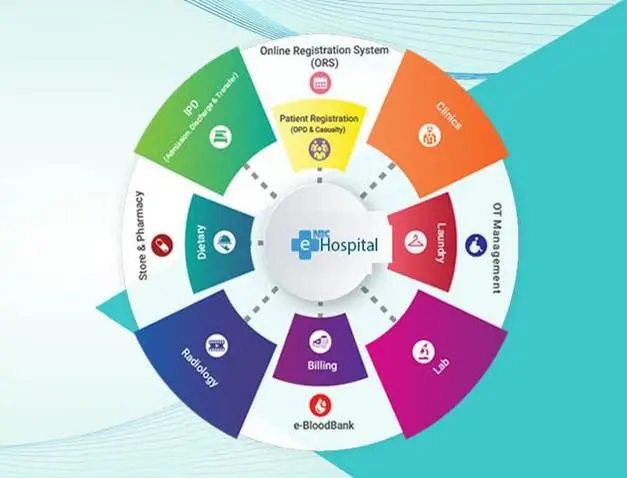
What is the Framework of Healthcare Regulation in India?
- Historical Regulatory Landscape:
- During Colonial Times: Fragmented regulations influenced by colonial governance, such as the Madras Public Health Act of 1939.
- Bhore Committee Report (1946): Advocated for the integration of preventive, promotive, and curative healthcare services and the establishment of Primary Health Centres in rural areas.
- Economic Liberalisation (1991): Led to the expansion of private healthcare, necessitating updated regulations.
- Key Regulatory Bodies:
- Ministry of Health and Family Welfare (MoHFW): Formulates overarching healthcare policies.
- National Medical Commission (NMC): Regulates medical education and licensure, replacing the Medical Council of India under the NMC Act, 2019, to enhance transparency.
- Others: Include the Nursing Council and Pharmacy Council.
- Major Regulatory Laws and Policies:
- Pre-Conception and Pre-Natal Diagnostic Techniques Act, 1994: Aims to prevent female foeticide.
- Clinical Establishments (Registration and Regulation) Act, 2010: Mandates registration and standard treatment guidelines for clinical facilities.
- Drugs and Cosmetics Act, 1940: Regulates pharmaceuticals.
- Consumer Protection Act, 1986: Initially did not explicitly cover healthcare services, but subsequent court rulings interpreted its scope to include healthcare.
- National Health Policy, 2017: Sets out a vision for universal health coverage.
What are the Major Challenges Related to India’s Healthcare System?
- Public Health Expenditure Gap: Despite ranking as the world's fifth-largest economy, India allocates only 2.1% of its GDP to healthcare in FY23, leading to high out-of-pocket expenses for citizens, amounting to 47.1%.
- Urban-Rural Healthcare Disparity: India's healthcare infrastructure heavily favours urban areas, leaving rural regions underserved. While 65% of the population resides in rural areas, they have access to only 25-30% of healthcare facilities, challenging India's constitutional commitment to equality.
- Rising Non-Communicable Diseases (NCDs): NCDs account for 64% of India's disease burden, with diabetes alone affecting 77 million people in 2019 and projected to rise to 134 million by 2045. Despite this, public health efforts remain primarily focused on infectious diseases, neglecting the growing NCD burden.
- Mental Health Crisis: India faces a severe shortage of mental health professionals, with only 0.75 psychiatrists per 100,000 people and minimal allocation (0.05%) of the health budget towards mental health. Consequently, India grapples with 36.6% of global suicides.
- Telemedicine Disparity: While telemedicine emerged as a solution during the Covid-19 pandemic, India's digital divide hampers its effectiveness. Rural areas, despite having the second-largest number of internet users globally, lag behind urban areas, exacerbating healthcare inequities.
- Climate Change Impact: Climate change poses significant health risks, with air pollution alone contributing to 1.67 million deaths in India in 2019. Additionally, heatwaves affect crop yields, directly impacting nutrition and public health.
- Governance Challenges: India's healthcare sector faces governance disparities, with bureaucratic hurdles and favouritism towards large corporate hospitals. This governance conundrum hinders efficient healthcare delivery, particularly for smaller clinics and nursing homes.
- Pharmaceutical Credibility Crisis: Despite being a major supplier of generic drugs globally, India's pharmaceutical industry faces credibility issues, as highlighted by incidents like the 2022 cough syrup tragedy in Gambia.
- Neglect of Preventive and Primary Care: India's healthcare system prioritises curative, hospital-based care over preventive measures and primary care. This neglect results in escalating costs and a burden of preventable diseases, perpetuating a cycle of illness and expenditure.
What Measures can be Adopted to Revamp India’s Health Sector?
- Risk-Based Regulatory Reform: Introducing a tiered regulatory system based on facility complexity and risk to streamline approvals and ensure stringent oversight, with a focus on outcome-based regulations.
- Health-Education-Livelihood (HEL) Campuses: Establishing integrated rural campuses with health centres, skill development centres, and health-tech incubators to boost healthcare human resources and local economies.
- "Pharma-to-Plate" Integrity Chain: Implementing a blockchain-based tracking system for pharmaceutical products to combat counterfeit drugs and ensure high-quality medications, supported by a global tracking app.
- Mental Wealth Initiative: Promoting mental health as an economic asset through corporate tax breaks, integrating mental health modules into professional courses, and training local providers to offer counselling services.
- Ayush Integration: Increasing AYUSH practitioners in allopathic healthcare settings and introducing wellness sessions in schools and workplaces to foster holistic healthcare and prevent non-communicable diseases.
- Climate Clinics: Deploying mobile clinics in climate-vulnerable areas, upgrading primary healthcare centres for climate resilience, and utilising health data to predict climate-related impacts and improve farming practices.
- Expansion of ABHA: Nationwide promotion of Ayushman Bharat Health Accounts (ABHA) and the use of artificial intelligence for hyperlocal public health strategies to enhance preventive care and overall healthcare outcomes.
- Women-Led Health Panchayats: Establishing all-women health councils in every panchayat to audit local health facilities, allocate health funds, and improve rural health governance, empowering women and improving health outcomes.
|
UPSC Civil Services Examination, Previous Year Questions (PYQs) Prelims Q:1 Which of the following are the objectives of the ‘National Nutrition Mission’? (2017)
Select the correct answer using the code given below:
Ans: (a) Mains Q:1 “Besides being a moral imperative of a Welfare State, primary health structure is a necessary precondition for sustainable development.” Analyse. (2021) |
Source: TH
Share the article
Get Latest Updates on Offers, Event dates, and free Mentorship sessions.

Get in touch with our Expert Academic Counsellors 👋
FAQs
UPSC Daily Current Affairs focuses on learning current events on a daily basis. An aspirant needs to study regular and updated information about current events, news, and relevant topics that are important for UPSC aspirants. It covers national and international affairs, government policies, socio-economic issues, science and technology advancements, and more.
UPSC Daily Current Affairs provides aspirants with a concise and comprehensive overview of the latest happenings and developments across various fields. It helps aspirants stay updated with current affairs and provides them with valuable insights and analysis, which are essential for answering questions in the UPSC examinations. It enhances their knowledge, analytical skills, and ability to connect current affairs with the UPSC syllabus.
UPSC Daily Current Affairs covers a wide range of topics, including politics, economics, science and technology, environment, social issues, governance, international relations, and more. It offers news summaries, in-depth analyses, editorials, opinion pieces, and relevant study materials. It also provides practice questions and quizzes to help aspirants test their understanding of current affairs.
Edukemy's UPSC Daily Current Affairs can be accessed through:
- UPSC Daily Current Affairs can be accessed through Current Affairs tab at the top of the Main Page of Edukemy.
- Edukemy Mobile app: The Daily Current Affairs can also be access through Edukemy Mobile App.
- Social media: Follow Edukemy’s official social media accounts or pages that provide UPSC Daily Current Affairs updates, including Facebook, Twitter, or Telegram channels.


